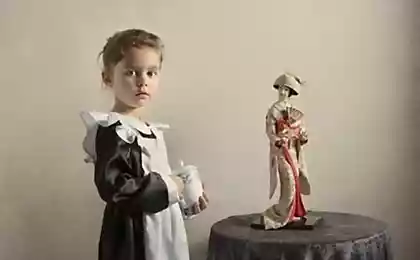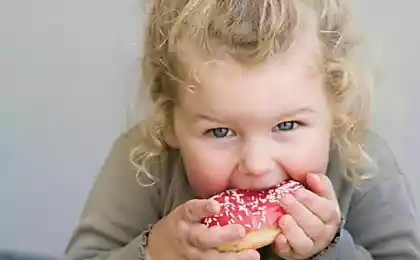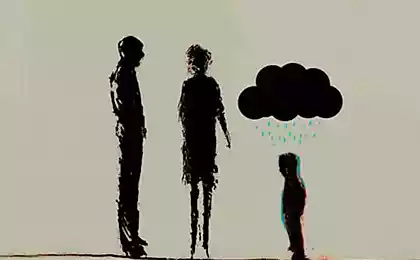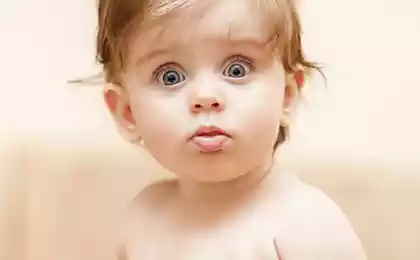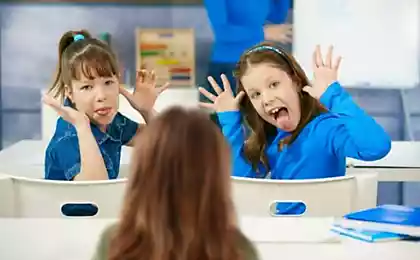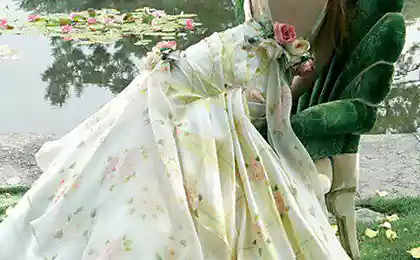566
How to teach child to tell time
As you know, children of preschool age, because of the nature of thinking (it is in preschoolers visual-figurative), difficult to operate with abstract concepts. Time fall into this category — it cannot be seen or touched, yet we all feel it move.
Sixty two million nine hundred fifty three thousand five hundred forty three
How to teach preschooler to tell time? And is it possible?
Even a small child must learn to plan your time and navigate it. However, for 6-7 year old child is very difficult to learn how to tell time by the clock hands. Young children's perception of time is very subjective, however, and adults know the moment — when we are busy with interesting and enjoyable experience (for the child is, of course, a game or an interesting walk), time is speeding up, is quick — the kid may feel that he only started to play, got a taste, and in fact, it's been a few hours. If a child waiting to be picked up from the playschool busy or uninteresting for the class, and 10 minutes can seem like hours.
Where to begin the child's education determining the time of?
Sequence of events
Not necessarily and don't even need to explain to the child where on the clock which arrow and what it means. To begin the child's education determining the time should be the most simple and clear for young children with the sequence of events that is easy to make during the game, and daily activities.
The child sees that the day, evening comes, then night (go to sleep) in the morning to get up and go to kindergarten for the morning, followed the day. So the baby is formed the primary representation about time as about a sequence of events. To consolidate this view, pay attention to any sequence of events, for example in fairy tales — at first, my mother baked pies, and then sent little Red riding hood to her grandmother then little Red riding hood met a wolf…
Games — All of the time, the Time of day.
Twenty eight million seven hundred fifty seven thousand nine hundred thirty one
Introduce past, present and future
The next step is to familiarize children with time concepts past, present and future.
Again, you need to use everyday activities and games, accompanying them with interviews and examples. For example, now you are walking on the street light, the day is now. In the evening guests will come to the grandmother is the future... Ask your child what will come when winter will end. Considering the family photo album, show your child how small he was before is the past.
What used to be my dad, mom, grandma, grandpa is the past too. Plan something together with a child (summer vacation, going to the theater, to visit), pay attention to him, that it will be in the future. Yesterday you went to the circus is the past.
Games — A short history timeline (puzzle), Before and after (puzzle)
The designated times of the year
It is important to not only tell the child how much a year of seasons and months, but to explain in the illustrative examples that are changing in nature in spring, summer, autumn, winter. Also note that people in the winter and summer differently dressed. Make baby puzzles — "winter white, summer gray," etc.
Game — seasons (educational puzzles), all year Round.
Forty three million five hundred eighty nine thousand two hundred ninety two
And finally, teach your child to tell time.
my first watch
When the kid realized what the temporal sequence of events is that events and phenomena stretched in the past-present-future that there is a seasonal change of seasons, you can start familiarizing the child with the watch.
It is best suitable for that large a toy watch with moving hands and easily clear large numbers. First, tell your child that the clock has two hands the short (hour) — it moves slowly, and the long (minute) — it goes around the dial much faster. Give a child first, with the hour hand.
You can draw a poster, which will be drawn with a large clock marking the hour and the events in the life of the child, which this event corresponds. For example, 8 in the morning the child gets up — the picture draw a clock with arrow for 8 hours and a picture of the morning rise.
To begin with, you will have 4 — 5 events, recurring every day at the same time. For a start you can define them as "before lunch", "after quiet hours", "after dinner", gradually tying the event to the cursor position on the clock.
See also: 3 IMPORTANT things to teach Your children
Where are the "good girls»
Once the child has mastered with the hour hand, you can start exploring the minute — on our poster will be added to the events (again, repeating every day at a certain time) and the image of the clock with hour and minute hand. Don't forget to ask the child what time he goes to kindergarten, how much goes to sleep, etc. published
P. S. And remember, only by changing their consumption — together we change the world! ©
Join us in Facebook , Vkontakte, Odnoklassniki
Source: www.facebook.com/pereval.org/posts/1018541728182834:0
Sixty two million nine hundred fifty three thousand five hundred forty three
How to teach preschooler to tell time? And is it possible?
Even a small child must learn to plan your time and navigate it. However, for 6-7 year old child is very difficult to learn how to tell time by the clock hands. Young children's perception of time is very subjective, however, and adults know the moment — when we are busy with interesting and enjoyable experience (for the child is, of course, a game or an interesting walk), time is speeding up, is quick — the kid may feel that he only started to play, got a taste, and in fact, it's been a few hours. If a child waiting to be picked up from the playschool busy or uninteresting for the class, and 10 minutes can seem like hours.
Where to begin the child's education determining the time of?
Sequence of events
Not necessarily and don't even need to explain to the child where on the clock which arrow and what it means. To begin the child's education determining the time should be the most simple and clear for young children with the sequence of events that is easy to make during the game, and daily activities.
The child sees that the day, evening comes, then night (go to sleep) in the morning to get up and go to kindergarten for the morning, followed the day. So the baby is formed the primary representation about time as about a sequence of events. To consolidate this view, pay attention to any sequence of events, for example in fairy tales — at first, my mother baked pies, and then sent little Red riding hood to her grandmother then little Red riding hood met a wolf…
Games — All of the time, the Time of day.
Twenty eight million seven hundred fifty seven thousand nine hundred thirty one
Introduce past, present and future
The next step is to familiarize children with time concepts past, present and future.
Again, you need to use everyday activities and games, accompanying them with interviews and examples. For example, now you are walking on the street light, the day is now. In the evening guests will come to the grandmother is the future... Ask your child what will come when winter will end. Considering the family photo album, show your child how small he was before is the past.
What used to be my dad, mom, grandma, grandpa is the past too. Plan something together with a child (summer vacation, going to the theater, to visit), pay attention to him, that it will be in the future. Yesterday you went to the circus is the past.
Games — A short history timeline (puzzle), Before and after (puzzle)
The designated times of the year
It is important to not only tell the child how much a year of seasons and months, but to explain in the illustrative examples that are changing in nature in spring, summer, autumn, winter. Also note that people in the winter and summer differently dressed. Make baby puzzles — "winter white, summer gray," etc.
Game — seasons (educational puzzles), all year Round.
Forty three million five hundred eighty nine thousand two hundred ninety two
And finally, teach your child to tell time.
my first watch
When the kid realized what the temporal sequence of events is that events and phenomena stretched in the past-present-future that there is a seasonal change of seasons, you can start familiarizing the child with the watch.
It is best suitable for that large a toy watch with moving hands and easily clear large numbers. First, tell your child that the clock has two hands the short (hour) — it moves slowly, and the long (minute) — it goes around the dial much faster. Give a child first, with the hour hand.
You can draw a poster, which will be drawn with a large clock marking the hour and the events in the life of the child, which this event corresponds. For example, 8 in the morning the child gets up — the picture draw a clock with arrow for 8 hours and a picture of the morning rise.
To begin with, you will have 4 — 5 events, recurring every day at the same time. For a start you can define them as "before lunch", "after quiet hours", "after dinner", gradually tying the event to the cursor position on the clock.
See also: 3 IMPORTANT things to teach Your children
Where are the "good girls»
Once the child has mastered with the hour hand, you can start exploring the minute — on our poster will be added to the events (again, repeating every day at a certain time) and the image of the clock with hour and minute hand. Don't forget to ask the child what time he goes to kindergarten, how much goes to sleep, etc. published
P. S. And remember, only by changing their consumption — together we change the world! ©
Join us in Facebook , Vkontakte, Odnoklassniki
Source: www.facebook.com/pereval.org/posts/1018541728182834:0
